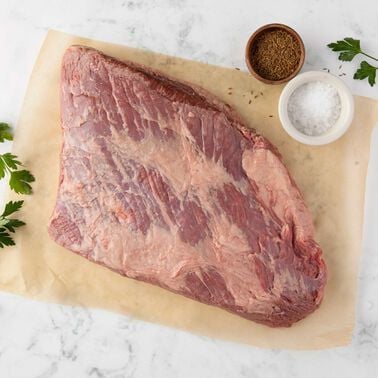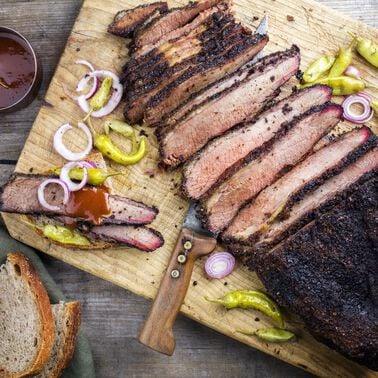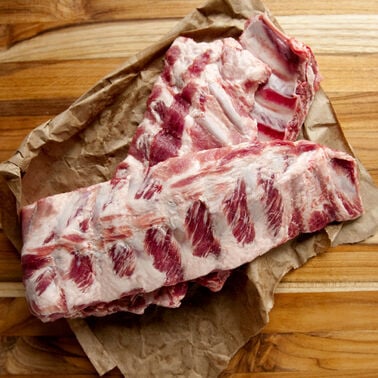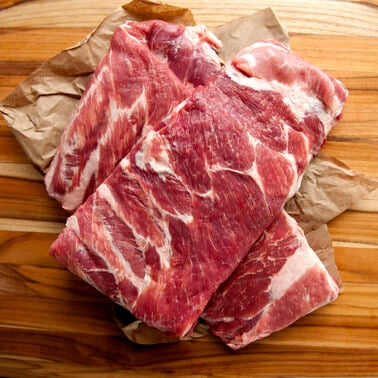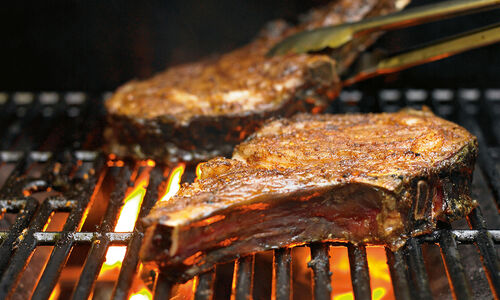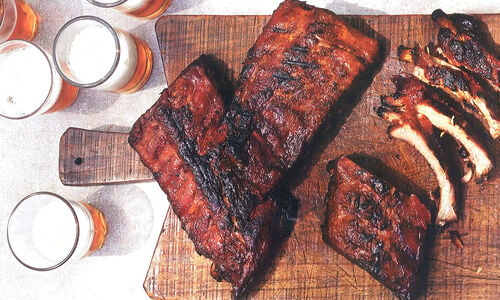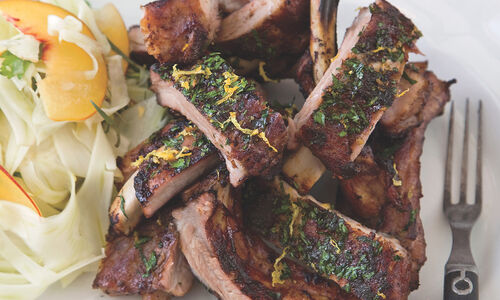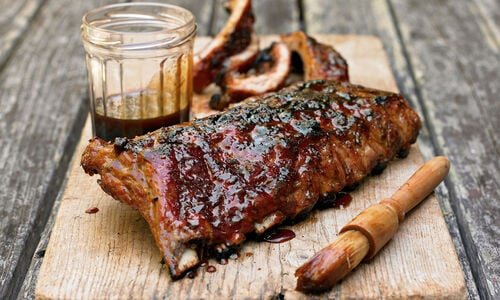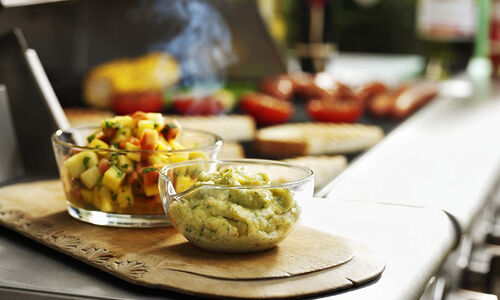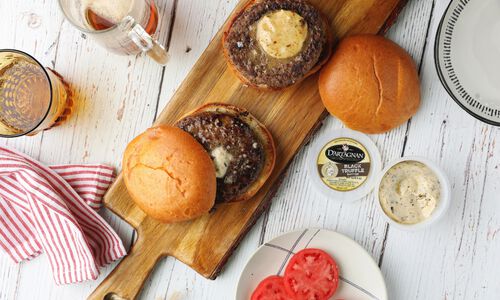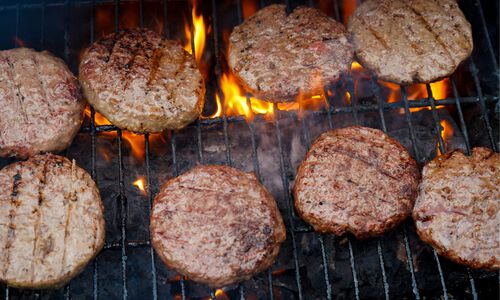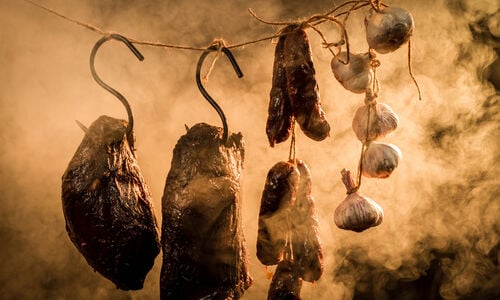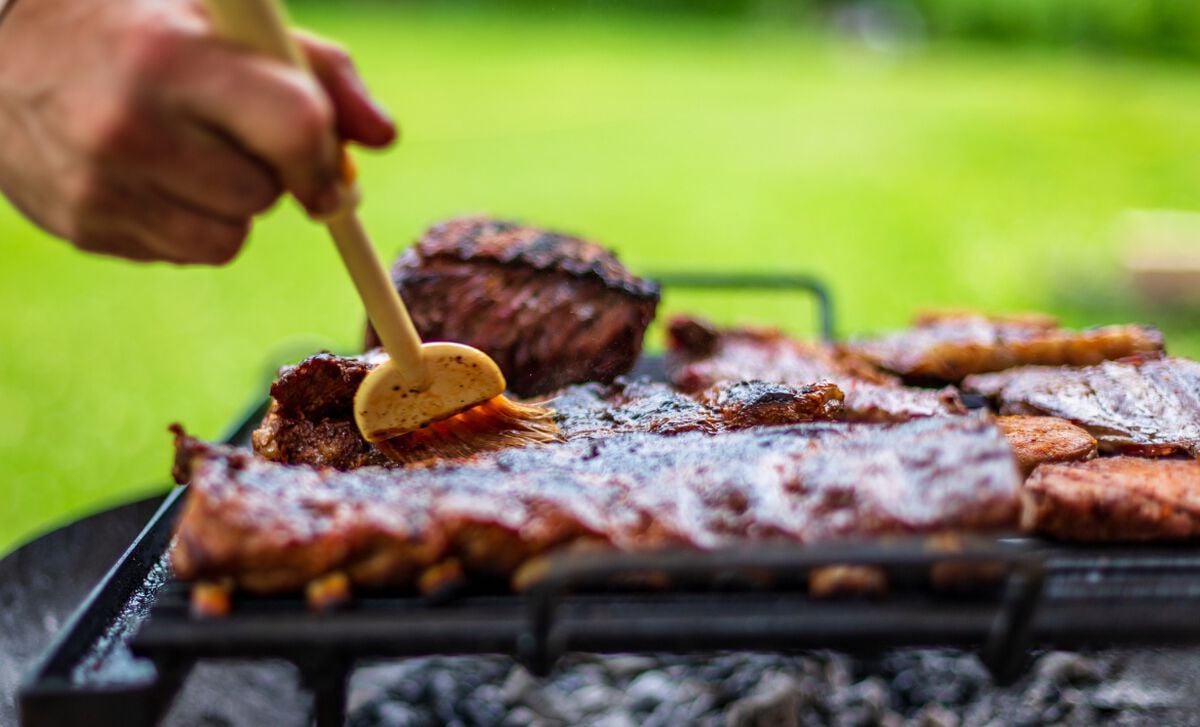
While the concept of roasting meat over low heat for a long time is as old as history itself, American barbecue evolved, over the years, to become something of its own, independent character. Sure, you can get a spit-roasted lamb in Greece, barbacoa in Mexico, or a whole suckling pig in Spain. But try to get a rack of "fall-off-the-bone" beef ribs smothered in thick, tangy, spicy mustard-based BBQ sauce anywhere else in the world, and you'll either come away empty-handed or disappointed.
The first thing that anyone should know about barbecue (or "barbeque" or "BBQ" as it's also often known), is that it is never a verb. One does not "barbecue." Similarly, a "barbecue" is not an event, nor is it a type of grill. The term "barbecue" means, quite simply, meat. Specifically, it is meat that has been cooked "low and slow" over charcoal or wood. Purists will never allow gas-cooked meat to be considered real "barbecue." And "vegetarian barbecue"...well, let's not get silly, shall we? That said, the different types of barbecue to be found in the USA are as varied as its regions and people. Although there are some outliers in Yankee states, most barbecue - and what many feel is the best to be found in America - comes from the southern states.
So, who does what kind of barbecue, and how? Exploring the regional variations is as fascinating as it is delicious. If you happen to live in Texas, the land of the long horn, you're going to go straight for the beef brisket, sliced and served with a light brown, mustard-based sauce. Famous versions of classic Texas barbecue can be found at places such as Austin's The Salt Lick, or Kreuz Market in Lockhart, Texas.
But not all barbecue is beef, of course. In the western parts of Kentucky, for example, they use neither beef nor pork to make their barbecue, but rather mutton, which is an older sheep. "Why not use lamb," you might wonder? Because lamb is soft and tender and wonderful when cooked rare or medium rare. With mutton, because it's older and has more connective tissue, you need to cook it for a long time to get those tough tissues and fatty muscle to break down, much like you would do with braised meat. In the rest of Kentucky, instead of mutton, you'll find some wonderful sliced pork butt, from the shoulder of the pig.
Then, of course, is the matter of sauce, which is likely the best way to differentiate the regional barbecue styles in the US. In Memphis, Tennessee, you're definitely going to want to tuck into some dry-rubbed pork or beef ribs, although they can be served dry or dripping with sauce. Tennesseans also like their sauce nice and smoky, whereas in Georgia, you can have your barbecue either sweet or spicy. Similarly, BBQ enthusiasts in Arkansas enjoy a kind of grab bag of different meats and sauces, although many prefer it to be spicy, as do most of those who love to dig into barbecue in Louisiana. If you happen to be in the midwest, you're best off if you love your meat covered in lots of sauce, because that's how you'll get the best barbecue in places like Kansas City and St. Louis.
Vinegar is also an important factor in barbecue; sauces made from vinegar as the base are popular in North Carolina, home of the "pig pickin," and in Mississippi, where they love their meat nice and vinegary. But perhaps the two most interesting types of BBQ sauce can be found in South Carolina, where you'll discover a yellow sauce made from mustard, and Alabama, where, believe it or not, the barbecue sauce is white, derived from a mayonnaise base. Note, if you're going to try to replicate this kind of sauce and have a good recipe, make sure to mop it on your barbecue only after it’s off the grill, since the mayonnaise will separate if it gets too hot, and no one wants that.
Whichever barbecue you enjoy best, always make sure you get your meat from a trusted source, and make sure to keep those coals from getting too hot. And, at the end of a long day cooking barbecue, you'll be rewarded not only with some of the best meat found on the planet earth, but that also carries that wonderful, indispensable trademark: Made in the U.S.A.
